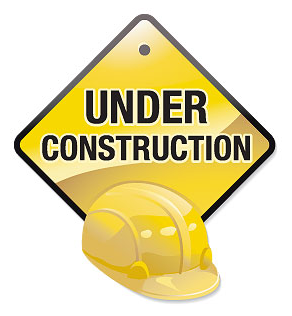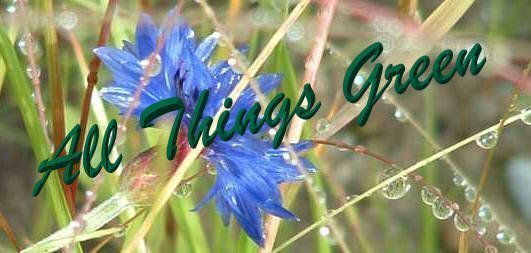|
|
|
Lighting / Electricity
Energy
Start lighting
Changing the world starts with simple
actions. When you replace
light bulbs or entire
light fixtures in your home with ones that have
earned the government’s ENERGY STAR, you help preserve
energy resources and reduce the risks of global warming
while saving money and time buying and changing lights
in your home.
To
save the most energy and money,
replace your highest used fixtures or the light bulbs in
them with energy-efficient models. The five highest use
fixtures in a home are typically the kitchen ceiling
lights, the living or family room table and floor lamps,
and outdoor porch or post lamp. Use our
Resources pages to find a
source for ENERGY STAR lighting.
The smallest things can add up to a real
difference. We encourage you to change out the light
fixtures or bulbs at home that you use most with ENERGY
STAR qualified models. If every American home replaced
their 5 most frequently used light fixtures or the bulbs
in them with ones that have earned the ENERGY STAR, we
would save close to $8 billion each year in energy
costs, and together we would prevent the greenhouse
gases equivalent to the emissions from nearly 10 million
cars.
FACT: The energy used in the average
home can be responsible for more than twice the
greenhouse gas emissions of the average car. When you
use less energy at home, you reduce greenhouse gas
emissions from power plants and help protect our
environment from the risks of global climate change.
Information from
http://www.energystar.gov
Energy Star Appliances
Did you know that the average home spends
about $1,900 on energy costs every year? Change to
appliances that have earned the ENERGY STAR, and you can
save $80 a year in energy costs, while saving the
environment.
Save Energy, Save Money
When buying an appliance, remember
that it has two price tags: what you pay to take it home
and what you pay for the energy and water it uses.
ENERGY STAR qualified appliances incorporate advanced
technologies that use 10–50% less energy and water than
standard models. The money you save on your utility
bills can more than make up for the cost of a more
expensive but more efficient ENERGY STAR model. Use our
Resources pages to find a
source for ENERGY STAR appliances.
Help Protect the
Environment
Simple actions can make a big
difference. If just one in 10 homes used ENERGY STAR
qualified appliances, the change would be like planting
1.7 million new acres of trees.
For top performance, premium features,
and energy savings, look for energy-efficient clothes
washers, refrigerators, dishwashers, room air
conditioners and dehumidifiers that have earned the
ENERGY STAR. This mark may appear on the appliance, the
packaging or the
Energy Guide label.
Information from
http://www.energystar.gov
Daylighting
Daylighting is the use of
windows and skylights to bring
sunlight into your home.
Today's highly energy-efficient windows, as well
as advances in
lighting design, allow efficient use of windows to reduce the
need for artificial lighting during daylight hours without causing
heating or cooling problems.
The best way to incorporate daylighting in your
home depends on your climate and home's design. The sizes and
locations of windows should be based on the cardinal directions
rather than their effect on the street-side appearance of the house.
South-facing windows are most advantageous for
daylighting and for moderating seasonal temperatures. They allow
most winter sunlight into the home but little direct sun during the
summer, especially when properly shaded.
North-facing windows are also advantageous for
daylighting. They admit relatively even, natural light, producing
little glare and almost no unwanted summer heat gain.
Although east- and west-facing windows provide
good daylight penetration in the morning and evening, respectively,
they should be limited. They may cause glare, admit a lot of heat
during the summer when it is usually not wanted, and contribute
little to solar heating during the winter.
If you're constructing a new house, you want to
consider daylighting as part of your
whole-house design—an approach for building an energy-efficient
home.
From
US Department of Energy Energy Efficient Renewable Energy
Skylights
A skylight can provide your home with
daylighting and warmth. When properly selected and installed, an
energy-efficient skylight can help minimize your heating, cooling,
and lighting costs.
Skylight Shapes
Skylights are available in a variety of shapes and
sizes. The most common shapes include rectangular, circular, oval,
diamond, triangular, multi-sided, and tubular.
Non-rectangular units usually use plastic glazing, but
higher quality ones use glass. The glazing can be flat, arched, domed,
pyramidal, or "warped plane"—flat on the low side and concave in section
on the high side. Of these, the pyramidal, arched, and domed shapes
offer flexibility for positioning. Their raised design allows light to
enter from more extreme angles than flat or warped plane units. This
allows more positioning options.
The slope or curvature of the glazing also helps to
shed moisture and leaves. These skylight designs also do not require the
additional framing needed to slope a flat skylight for proper drainage
on flat or low-slope roofs.
Tubular skylights are smaller than most other
skylights. They consist of roof-mounted light or solar collectors, which
increase their daylighting potential without the need to increase their
size. Because the rooftop solar collector has a small surface area,
tubular skylights minimize heat loss in the winter and heat gain in
summer. Their small size also minimizes their impact on a home's
architecture.
From
US Department of Energy Energy Efficient Renewable Energy
The little things
Little things add up. If if all of the world's
population does just a little to conserve energy we can make a BIG
difference. Some things to consider
- Turn appliances off when not in use
- Turn lights off when you leave a room
- Use the microwave to cook small meals
- Adjust the temperature of your refrigerator
(proper range is 36 to 38 degrees)
- Adjust the temperature of your freezer (proper range is 0 to +5 degrees)
- On dehumidifiers use the lowest setting
Motion-Sensing Lights
Motion
sensors, either built into a light fixture or
retrofitted as an add-on to a bulb socket, are usually
associated with outdoor applications. And they work well
for that purpose. Before motion-sensing lights were
invented, homeowners wishing for greater security
outside their homes were forced into leaving on outdoor
lights all night to illuminate garages, barns, and back
doors. That burned up a lot of electricity. Now motion
detectors can provide you with illumination when you
need it and allow for energy-saving darkness when you
don't.
Outdoor
lights that come on suddenly due to an activation of the
motion sensor can also surprise and thus deter thieves.
When someone is caught in the beam of a suddenly
illuminated landscape, he or she doesn't know whether
the light came on because of a motion sensor or because
someone has flicked on a floodlight switch.
Motion-sensing lights can also alert a homeowner that an
intruder is passing through a yard. It might only be a
neighbor's cat, but sometimes the backyard light
suddenly coming on can reveal unexpected occurrences.
Virtually any exterior lighting fixture can be upgraded
to motion-sensor light status with a simple adapter.
Another
benefit to installing motion-sensing lights outside your
home is the safety they can provide in lighting your way
as you walk to and from your garage. The lights allow
you to become aware of any potentially dangerous
circumstances and also to illuminate walkways and
sidewalks so you can avoid obstructions.
Motion-sensing lights are increasingly making their way
inside the home as well. They're handy for places like
the landing area at a back door, where you might often
enter with your hands full. Closets and pantries are
also good candidates for motion-sensor light adapters.
You're usually bringing something into or removing
something from those areas, so trying to switch on or
switch off an overhead light can be challenging. And
since the light is only on when you're in those specific
areas, the bulb doesn't burn for any longer than
necessary -- and that saves electricity.
Zolton Cohen.
"How to Conserve Energy at Home".
May 16, 2006
http://home.howstuffworks.comhow-to-conserve-energy-at-home6.htm
(October 18, 2007)
Low-Voltage Exterior
Lighting
If you'd
like your outdoor landscape to be illuminated at night
for safety or for aesthetic reasons, there are ways to
do it that don't require much electrical power. One
product that is popular for such applications is
low-voltage lighting.
While
low-voltage lights won't illuminate the entire side of a
house or reach to the deepest stretches of a lot like a
line-voltage system (120 volts) can, they can guide the
way up front steps or along a walkway, or they can
accent a landscape feature without making the electric
meter spin too rapidly. Another benefit is that, because
they are dimmer than line-voltage systems, they don't
contribute to light pollution, and neighbors are
unlikely to complain that the downward-facing lights
keep them awake at night.
Many
low-voltage outdoor lighting systems operate at 12
volts, which makes the installation safe for use when
children or pets are around. There is no shock hazard
should a wire get cut accidentally. Because the lights
can be easily moved around the yard, you can change the
display to suit the season, adding or subtracting lights
as needed. For even better energy performance, putting
the system on a timer turns off the lights when they
aren't likely to be needed and on when they are.
Solar-powered landscape lights, which cost nothing to
operate, are also available. Installation involves
pushing the support stake into the ground. Each light is
equipped with a small solar panel on top and a
rechargeable battery and bulb inside. The panel charges
the battery during the day, and the light stays on all
night. Some solar landscape lighting is equipped with
bright and high-efficiency LED (light emitting diode)
lights for lower energy consumption, durability, and
longer-lasting performance.
Zolton Cohen.
"How to Conserve Energy at Home".
May 16, 2006
http://home.howstuffworks.comhow-to-conserve-energy-at-home6.htm
(October 18, 2007)
Beware of
standby power
Standby power, also
called Vampire power, refers to the
electric power consumed by electronic appliances in a
standby mode. A very common "electricity vampire" is a
power adaptor built on a
plug with no power switch. However, while this consumption of power
is used to provide functions for appliances such as
remote controls and
digital clocks to the user, most of the power consumed is considered
wasted.
Devices and
functions that consume standby power
- Power supplies, transformers and
ineffective electronic devices, for example battery
chargers. Those constantly generate heat that can't
be further used.
- "Instant on" functions, like
remote control receivers, waiting for the user to
interact.
- Displays and condition
indicators, such as clocks, temperature gages and
status indicators, for instance the standby LEDs on
electronic devices, although the power used by such
indicators is very small (milliwatt range).
How does your
electrical production stack up?
The EPA provides a
Power Profiler that will:
- Determine your power grid region based on your
ZIP code and electric utility
- Compare the fuel mix and air emissions rates of
the electricity in your region to the national
average
- Determine the air emissions impacts of
electricity use in your home or business
After reviewing your electricity production you may
want to consider some
Green
Power alternatives.
Information from
http://www.epa.gov
|
|
|










